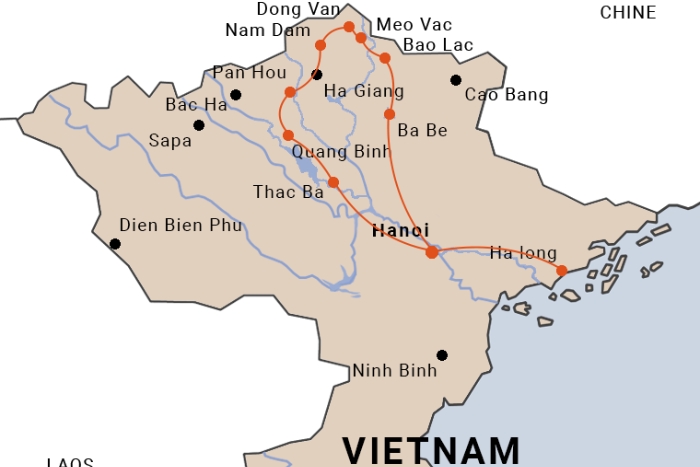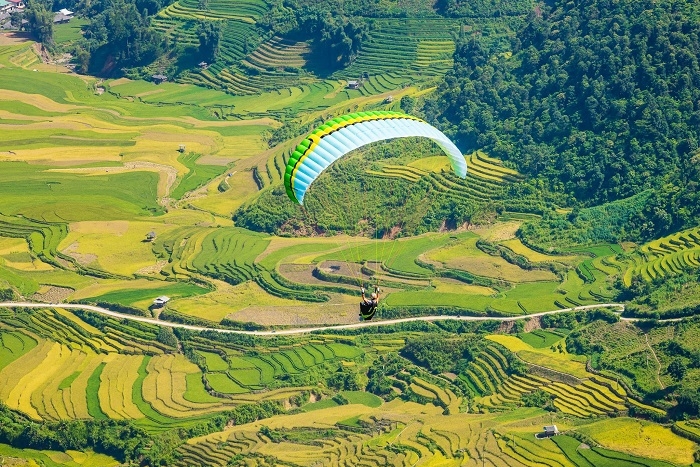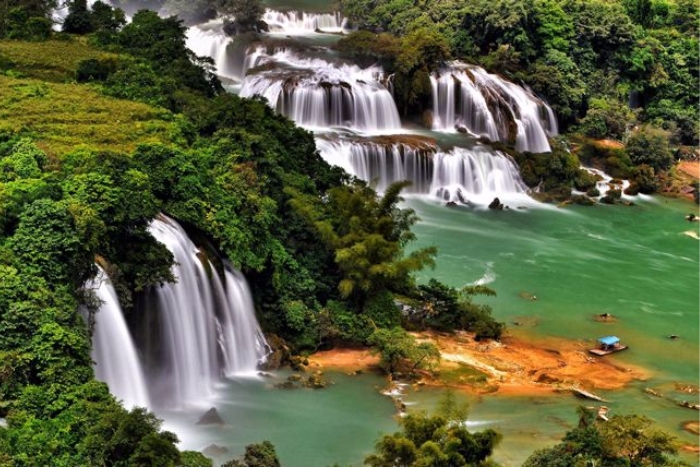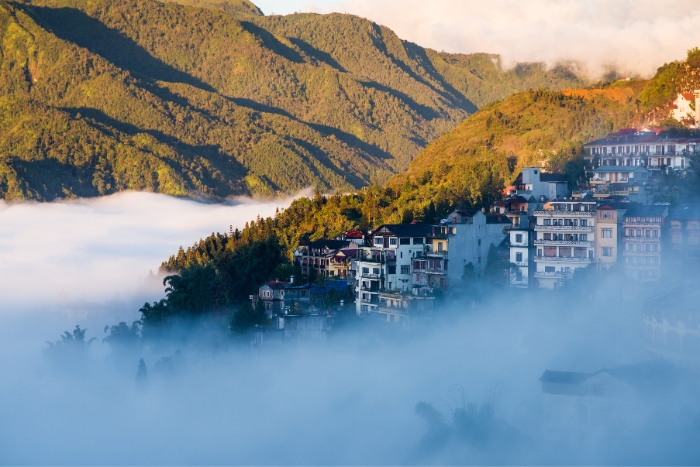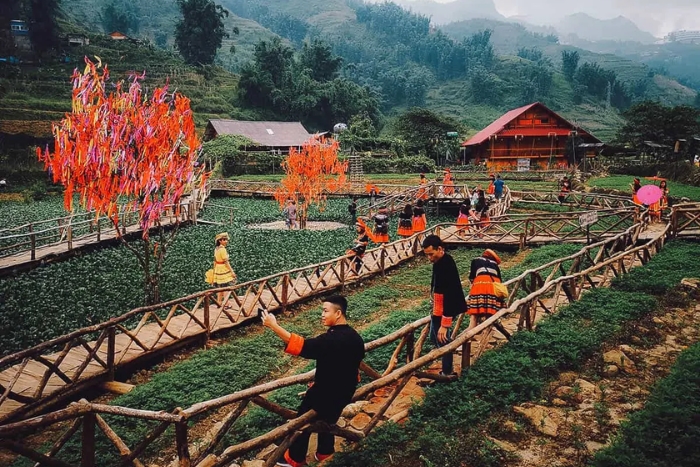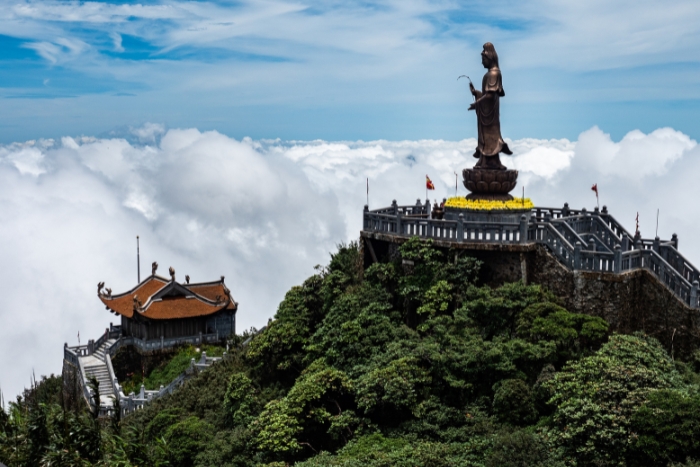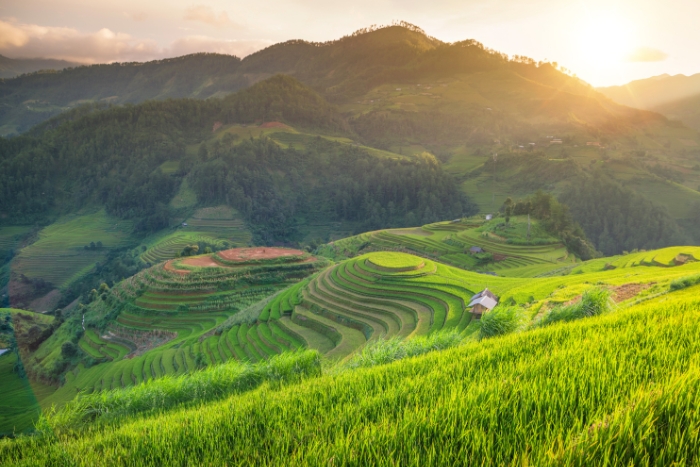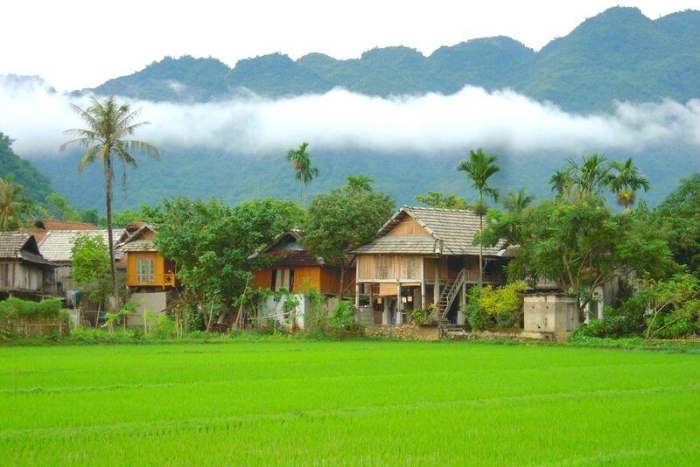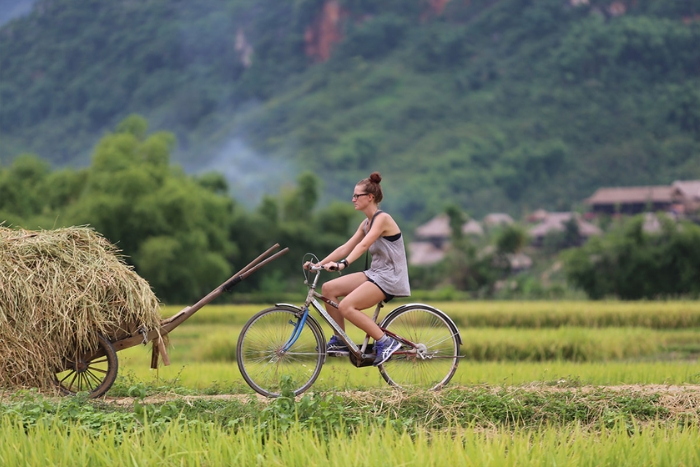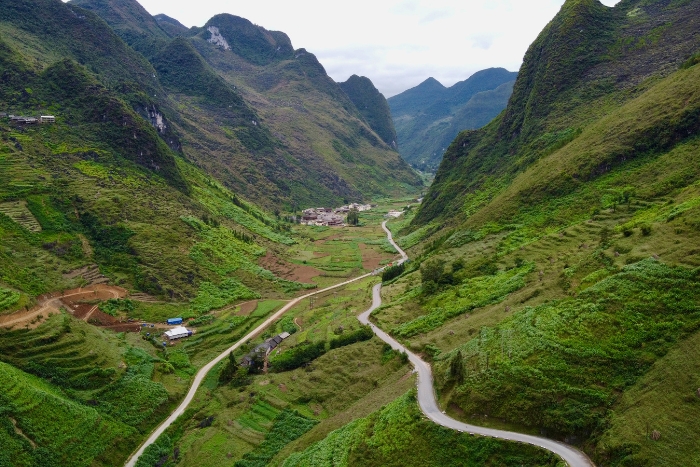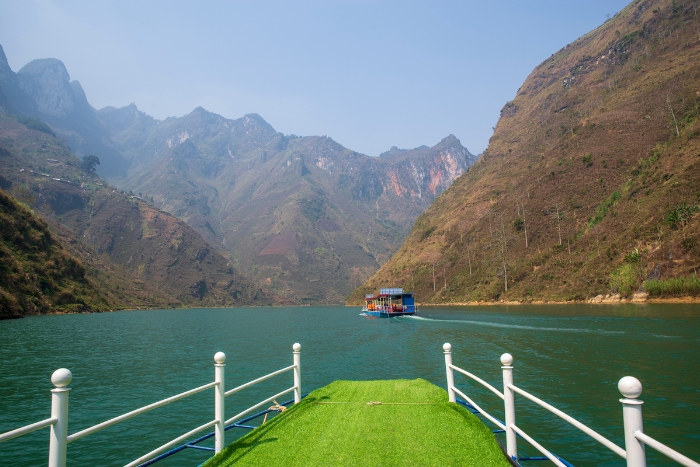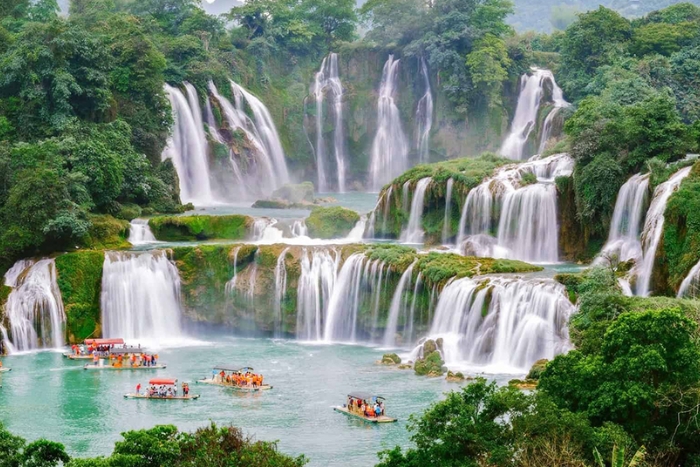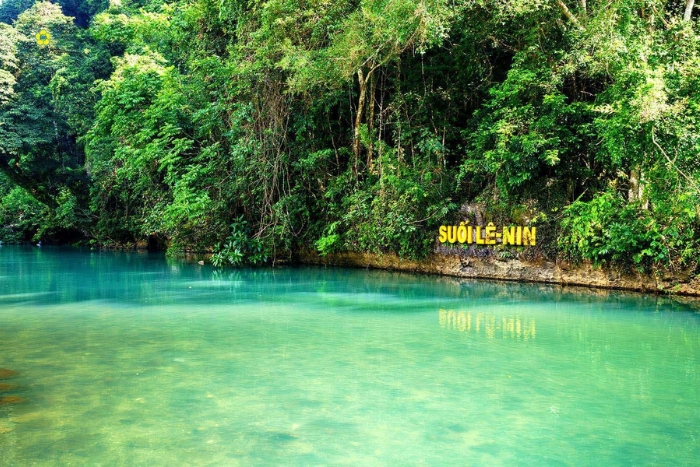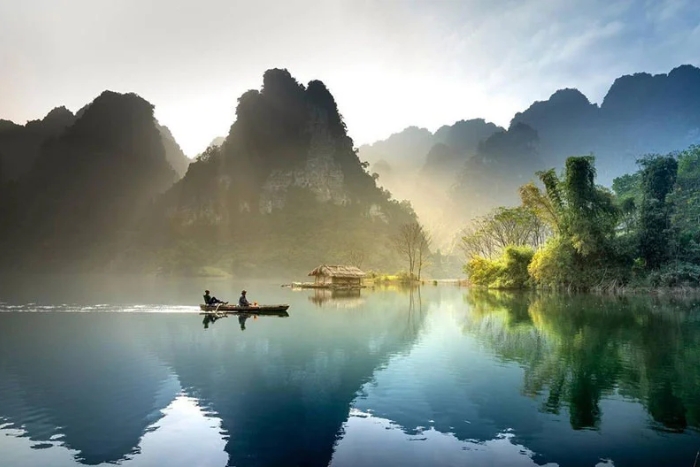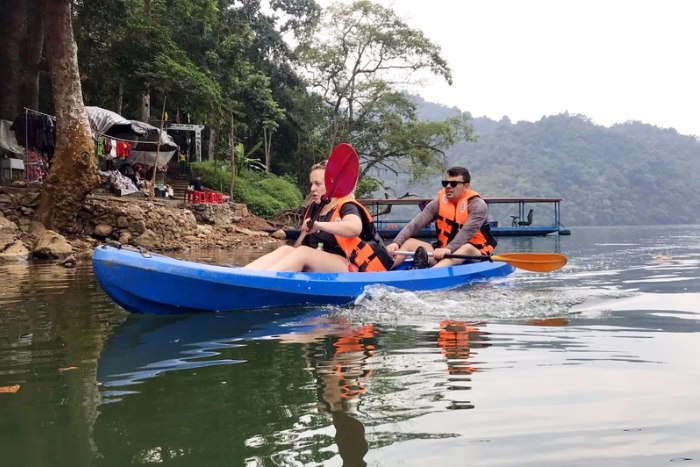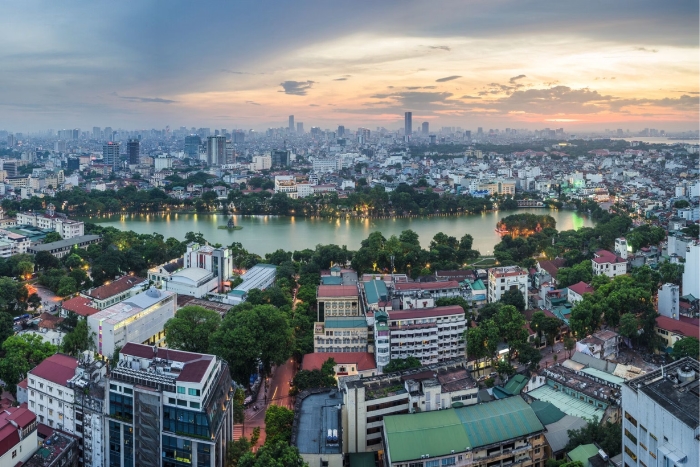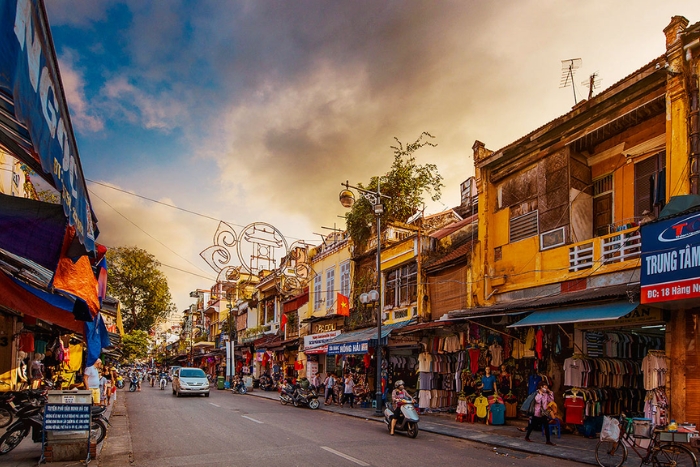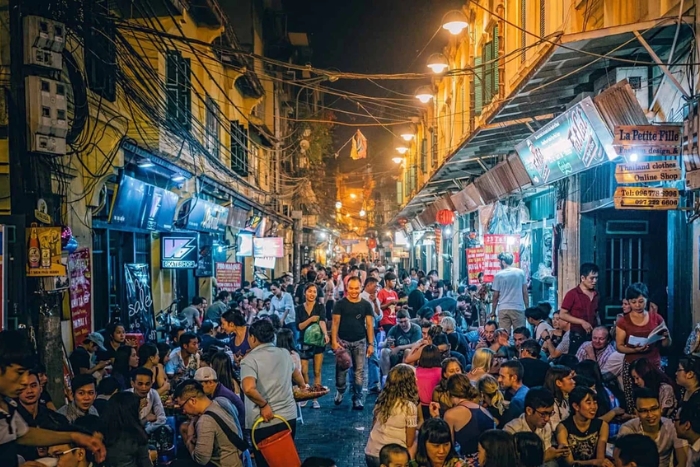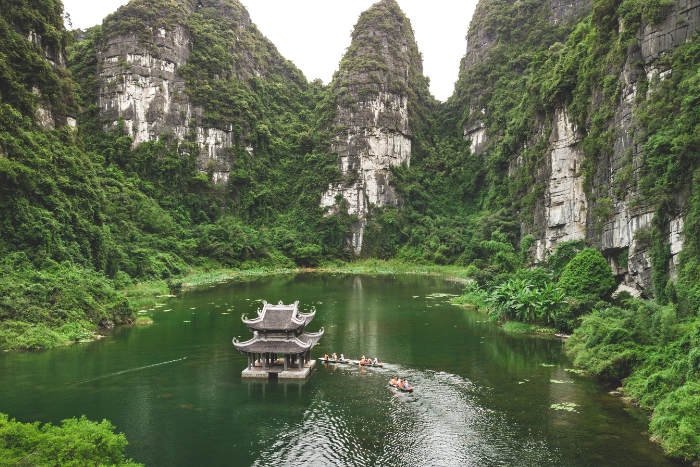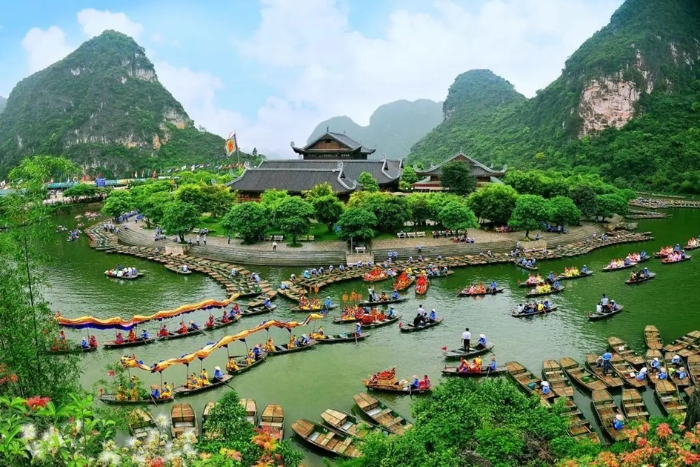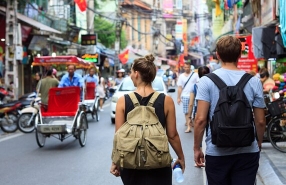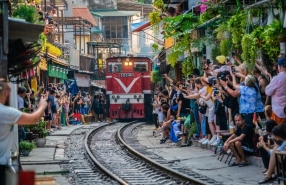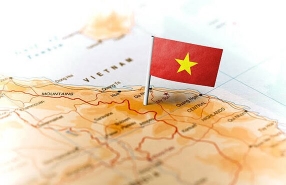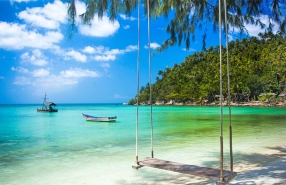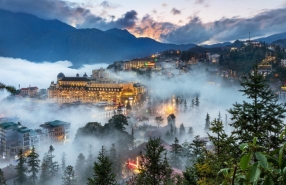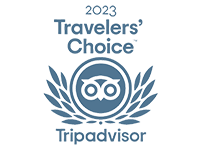Northern Vietnam is a captivating destination for travellers seeking adventure, culture, and natural beauty. But what exactly should you do in northern vietnam trip? Which places offer unique and authentic experiences, showcasing the true essence of this region? In this article, Autour Asia provides a comprehensive guide to help you plan your journey through Northern Vietnam and fully enjoy its hidden treasures. Welcome to a region where every moment reveals the extraordinary.
I. Northern Vietnam through geographic map
Northern Vietnam is one of the three geographical regions of the country, situated to the north, bordered by China, Laos, and the East Sea . It features a diverse landscape that includes plains, hills, coasts, and islands. This region is divided into three sub-regions: the Northwest, the Northeast, and the Red River Delta, each offering its own unique characteristics and stunning beauty. The area is brimming with diverse landscapes, rich cultures, and remarkable historical and natural heritage, delighting travelers eager for discovery.
For a truly unique Vietnam trip , Northern Vietnam is a must-visit destination. You’ll encounter breathtakingly diverse landscapes, rich and authentic cultures, delicious and unique culinary specialties, and the warm and welcoming people of this region. The must see in north vietnam are spread across three distinct gems, each providing an unforgettable experience for every traveler.
1. The Northwest of Vietnam
This is the rugged and mountainous region of Northern Vietnam, home to numerous ethnic minorities. Here, you can explore majestic peaks, admire endless terraced rice fields, verdant valleys, tropical forests, waterfalls, caves, and picturesque villages. Participate in vibrant markets, traditional festivals, and activities like trekking, cycling, motorbiking, or kayaking. Meet ethnic communities that have preserved their traditions and be captivated by the timeless beauty of these lands.
2. What to See in Northeast Vietnam?
Discover the stunning landscapes of Ha Giang, Cao Bang, and Lang Son, where towering mountains and lush valleys will captivate your adventurous spirit. This region also includes the coastal and island areas of North Vietnam, home to the world-famous Ha Long Bay. Enjoy the spectacular views of thousands of karst islands, mysterious caves, pristine sandy beaches, fishing villages, and pearl farms. Immerse yourself in the daily life of the locals and uncover hidden treasures in the heart of nature.
3. The Red River Delta
For those seeking unique and authentic experiences when visiting north vietnam, the Red River Delta is an ideal destination. This vast region comprises 11 provinces and cities around the Red River basin. It features a rich and diverse landscape with plains, hills, coasts, and islands. It is also the most populous and developed area in Northern Vietnam, in which has capital city, Hanoi, the country’s political, cultural, and economic center.
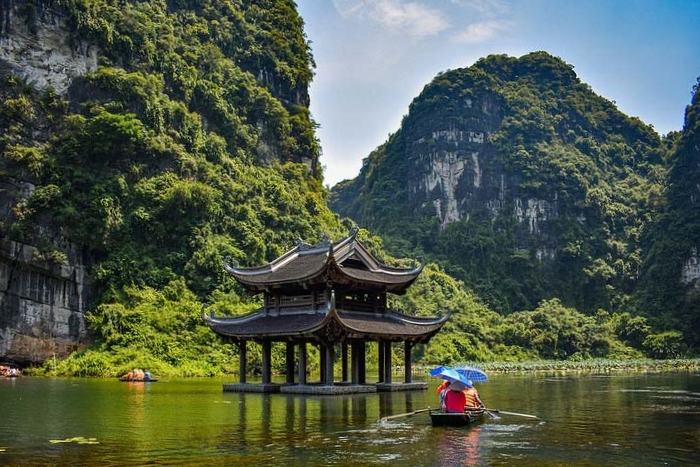
Some must-see destinations in the Red River Delta include Hanoi, Ninh Binh (Tam Coc, Trang An, Van Long), and Hai Phong (Cat Ba Island, Lan Ha Bay). The region is also home to numerous renowned cultural, historical, and natural heritage sites, attracting many domestic and international tourists. Stroll through bustling streets and discover the historic and modern charm of Hanoi, with its monuments, museums, temples, pagodas, and ancient quarters. Appreciate the beauty and diversity of the landscapes, the richness and authenticity of the cultures, and the delicacy and originality of culinary specialties like Phở, Bún Chả, Bánh Cuốn, Chả Cá, and Nem.
II. Northern Vietnam: Top best places to visit for unforgettable journey
1. Sapa: A must see in Northern Vietnam
Sapa is a hidden gem in
North Vietnam, nestled in the highlands of the northwest, near the Chinese border. This mountain town captivates visitors with its cool, refreshing climate, vast pine forests, towering snow-capped peaks, deep valleys, spectacular terraced rice fields, and picturesque ethnic minority villages.
Ideal for travelers seeking a unique and authentic northern vietnam tour, Sapa is truly a paradise for nature lovers. It offers a variety of activities, such as hiking along winding trails, trekking through majestic mountains, cycling, practicing yoga and meditation, or even ascending Fansipan, the highest peak in Indochina.
Sapa is home to numerous ethnic minorities, with 5 main groups: Hmong, Dao, Giay, and Xa Pho, living in traditional villages, preserving their customs and colorful attire, and welcoming visitors with warmth and hospitality. You can visit the vibrant Bac Ha market, the largest ethnic market in this region, to learn about their culture and craftsmanship. Immerse yourself in daily life by staying in traditional ethnic houses and savoring unique regional dishes.
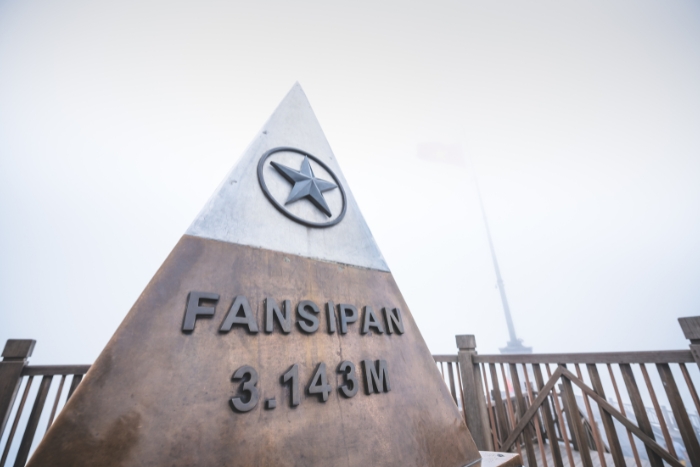
The majestic
Fansipan Mountain, also known as the "Roof of Indochina", is a must-visit in Sapa when
visiting north vietnam. Standing at 3,143 meters above sea level, Fansipan offers spectacular views of clouds, forests, and Muong Hoa's terraced rice fields. You can reach the summit through a challenging two-day hike or a 15-minute cable car ride, depending on your fitness level and preference. Along the way, you’ll encounter gardens, pagodas, and Buddhist statues that adorn the mountain. Every corner of Sapa reveals a new facet of
Northern Vietnam's cultural and natural diversity.
2. Mu Cang Chai & Nghia Lo
In the northwest of Vietnam,
Yen Bai province invites you to explore two exceptional locations where nature and culture harmoniously intertwine. You’ll be captivated by the stunning terraced rice fields, the charm of picturesque villages, and the rich heritage of the ethnic minorities who inhabit this region. A visit to Yen Bai offers a unique and authentic experience, revealing the true essence of a diverse and genuine Vietnam.
Mu Cang Chai is a district in Yen Bai province, renowned for its terraced rice fields, which have been recognized as a UNESCO cultural heritage site. These terraces span over 2,200 hectares at altitudes ranging from 1000 to 1600 meters, creating a magical landscape that attracts photographers and travelers alike. The fields are the result of the hard work and ingenuity of local residents, who have adapted their agricultural techniques to the challenging terrain.
The golden rice fields are particularly breathtaking in September and October, when they transform into a sea of gold, contrasting beautifully with the green mountains and blue sky. Mu Cang Chai is also home to several ethnic minorities, such as the H’mong, Thai, and Dao, who have preserved their traditional way of life and unique cultural practices.
Take a
northern Vietnam trip, remember to visit
Nghia Lo, located in the Muong Lo Valley, the second-largest valley in northwest Vietnam. Surrounded by lush mountains and clear rivers, it is known as the heartland of the Black Thai culture, an ethnic group that has lived in this region for centuries. The Black Thai people have a rich and diverse cultural heritage, reflected in their architecture, clothing, cuisine, dance, and songs.
In Nghia Lo, you can admire stilt houses, bamboo bridges, tea plantations, and rice fields. You can also taste local specialties or enjoy traditional folk performances, such as the "xoe" dance or the "khen" dance. If you are looking to escape the noise and stress of the city, a visit to Mu Cang Chai and Nghia Lo will offer unforgettable experiences, close to nature and the local people.
3. Lac Village – A Peaceful and Friendly Escape in Mai Chau
If you are looking for an authentic and refreshing destination in
northern vietnam trip, don’t miss
Mai Chau, one of the places offering unique and unforgettable experiences in Hoa Binh province, about 135 km from Hanoi. Lac Village, nestled in this beautiful valley, enchants every visitor with its rustic beauty of mountains and forests and the gentle and kind-hearted locals.
Lac Village is one of the most beautiful and oldest villages in Vietnam, with over 700 years of history. It is home to five clans of the White Thai ethnic group, who have preserved their ancestral traditions and customs. The village charms with its typical architecture, featuring stilt houses made of wood and bamboo, adorned with colorful geometric patterns.
Once reliant on rice farming and brocade weaving, the residents have now turned to tourism, converting their stilt houses into welcoming homestays. You can spend the night here, share meals, and experience daily life with the locals, as well as purchase colorful handmade crafts.
4. Ha Giang – A Breath of Wild Beauty in the Northern Mountains of Vietnam
Located in the far north of Vietnam, Ha Giang is a province often referred to as "the land at the end of sky," known for its winding roads, rocky peaks, lush highlands, majestic waterfalls, sky gates, and flower-filled villages. For adventurous travelers seeking a unique experience, this destination offers an unforgettable journey through breathtaking landscapes.
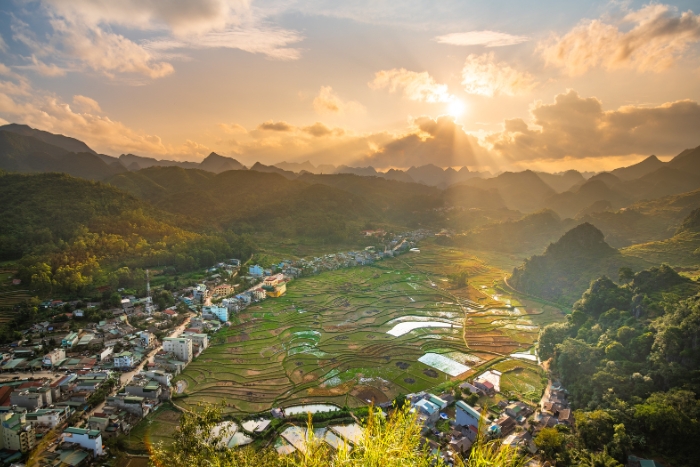
Exploring Ha Giang in
north vietnam travel itinerary is best done by motorbike, which allows you to traverse the province's most beautiful landscapes and discover its hidden gems. One of the highlights of Ha Giang is the Ma Pi Leng Pass, considered the most stunning and treacherous pass in Vietnam. This vertiginous road, perched high above the
Nho Que River, offers awe-inspiring views of mountains, rice fields, and villages. However, it's not for the faint-hearted, Ha Giang's roads are among the most challenging in the country, and it's essential to be an experienced rider. Plan at least 4 to 5 days to complete the 300 km
Ha Giang Loop, taking regular breaks to rest and fully appreciate the beauty of the area.
The Nho Que River is another highlight of Ha Giang, northern Vietnam, winding its way through deep valleys and towering cliffs, creating a stunning natural spectacle. You can take a boat trip along the river to enjoy the tranquility and admire the breathtaking scenery.
Other Must-See Attractions in Ha Giang
The Hmong King's Palace: A historic residence built in the early 20th century by a Hmong tribal leader, showcasing the wealth and power of this family.
Quan Ba Heaven Gate: A mountain pass that separates two peaks, giving the impression of entering another world.
Hoang Su Phi Terraced Fields: This region is famous for its vast terraced rice fields, considered one of the best places must see in north vietnam to admire these stunning landscapes. The terraced fields, especially during planting and harvest seasons, offer a visual feast of lush greenery and golden hues.
Visiting Ha Giang in north Vietnam trip offers a unique journey through diverse landscapes, from lush valleys to rugged peaks, providing an immersive experience for nature and adventure enthusiasts. The scenic roads offer panoramic views at every turn, inviting you to marvel at the raw beauty of this remarkable region.
5. Cao Bang with Ban Gioc Waterfall
When visiting north vietnam, a visit to Ban Gioc Waterfall in Cao Bang Province offers an extraordinary and captivating experience, immersing you in breathtaking landscapes, natural beauty, and unforgettable adventures.
Ban Gioc Waterfall, straddling the Vietnam-China border in Dam Thuy Commune, Trung Khanh District, is the world’s fourth largest cross-border waterfall. Standing 30 meters high and stretching 300 meters wide, it is framed by lush greenery and towering mountains. The waterfall’s multi-tiered cascades create a stunning natural spectacle. Visitors can enjoy the serene atmosphere from the riverbank or take a boat ride to experience the powerful roar up close. The striking contrast between the white foam and the emerald waters of the Quay Son River is truly captivating.
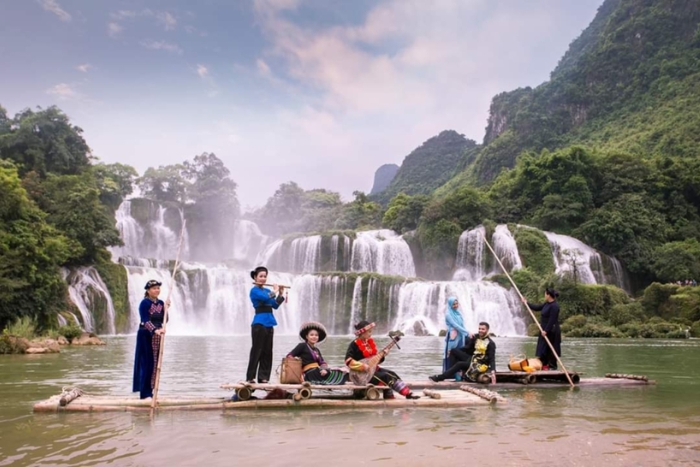
Cao Bang offers more than just stunning waterfalls. You can also visit Thang Hen Lake, a serene freshwater lake, or explore the Cao Bang Museum to learn about the province’s history from prehistoric times to the present day. For those interested in history and culture, the Pac Bo Historical Site, where President Ho Chi Minh lived and worked during the early days of the revolution, is a
must see in north vietnam.
6. Ba Be Lake: A Tranquil Escape in Bac Kan Province
Located about 240 km northeast of Hanoi, Ba Be Lake in Bac Kan province is a natural gem of Northern Vietnam. It is one of the world’s largest natural freshwater lakes and the largest in Vietnam. Formed approximately 200 million years ago by a significant geological upheaval, the lake is surrounded by limestone mountains and ancient forests. The complex geology and topography of the region have created stunning landscapes and a unique ecosystem.
Ba Be Lake lies in the Gâm River Arc, a rugged terrain marked by mountains ranging from 1400 to 1600 meters high, interspersed with valleys. The lake is fed by two rivers, the Cho Leng River and the Nam Cuong River, and flows into the Năng River, which eventually cascades down the Dau Dang Waterfall. Spanning over 8 km in length and 2 km at its widest point, the lake covers an area of around 500 hectares and has an average depth of 35 meters. It is home to many aquatic species, including rare fish listed in Vietnam’s Red Book.
The crystal-clear waters of Ba Be Lake remain cool year-round, reflecting the majestic mountains and cloudy skies like an immense mirror. It is one of the best places to escape to a preserved and peaceful environment, offering a serene retreat for nature lovers.
7. Hanoi – The Thousand-Year-Old Cultural Capital
No
Northern Vietnam trip would be complete without
visiting Hanoi - Vietnam capital and a jewel of the Red River Delta, Hanoi captivates travelers seeking an authentic experience in this fascinating region with many top
best things to do. As the political, historical, and cultural heart of the country, Hanoi thrives between tradition and modernity, offering a unique journey through its lively streets, iconic landmarks, and culinary delights.
With its winding alleyways and bustling markets, Hanoi is a harmonious blend of historical memories and contemporary vibrancy. Wander through
Hanoi Old Quarter with 36 ancient streets, and you’ll discover hidden treasures of French colonial architecture, ancient temples, and local craft shops. Indulge in exquisite shopping and savor
Hanoi cuisine with many plats delicacies like Phở, Bún Chả, and Nem, revealing the rich gastronomic heritage of Vietnam capital.
For art and history enthusiasts, explore the remnants of the French colonial era, such as St. Joseph's Cathedral and the Hanoi Opera House. Cultural landmarks like the
Temple of Literature and the Ho Chi Minh Mausoleum are must-visits. Craft villages like Bat Trang, known for its ceramics; Dong Ho, famous for its woodblock prints; and Van Phuc, renowned for its silk fabrics, showcase the skills and creativity of Vietnamese artisans, offering authentic and memorable experiences.
As night falls, Hanoi comes alive with a dazzling array of colors and sounds. The shores of Hoan Kiem Lake host water puppet shows and street musicians, while cafes and restaurants invite you to enjoy a Vietnamese coffee or a refreshing beer.
For a truly unique experience, stroll along Hanoi train street, where daily life unfolds in captivating proximity to the railway tracks, a scene of urban vibrancy you won’t find anywhere else.
8. Ha Long Bay – Adventure in a World Natural Heritage Site
Ha Long Bay, one of the natural wonders of the world, mesmerizes visitors with its legendary beauty, where thousands of karst islets rise majestically from the turquoise waters of the Gulf of Tonkin. Listed among the Seven Natural Wonders and recognized as a UNESCO World Heritage Site, this iconic destination offers an unforgettable experience for travelers seeking extraordinary discoveries.
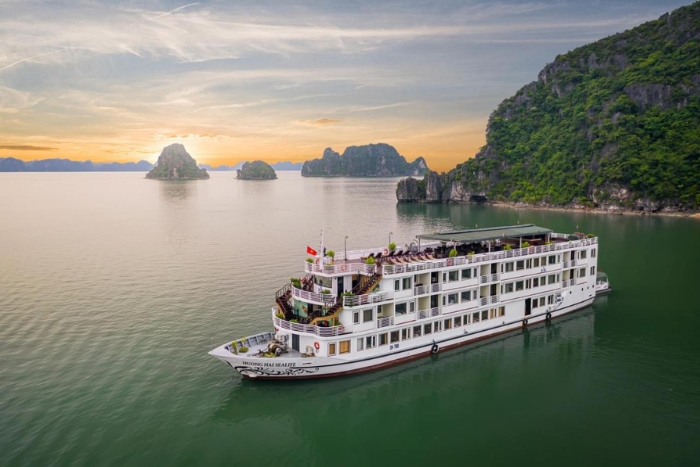
A Northern Vietnam trip is incomplete without experiencing the breathtaking beauty of Ha Long Bay in Quang Ninh Province. Its majestic limestone pillars, draped in lush greenery, form an enchanting seascape. According to legend, the bay was shaped by a descending dragon carving the land. The best way to explore this wonder is through an overnight cruise, offering an immersive experience of its captivating charm.
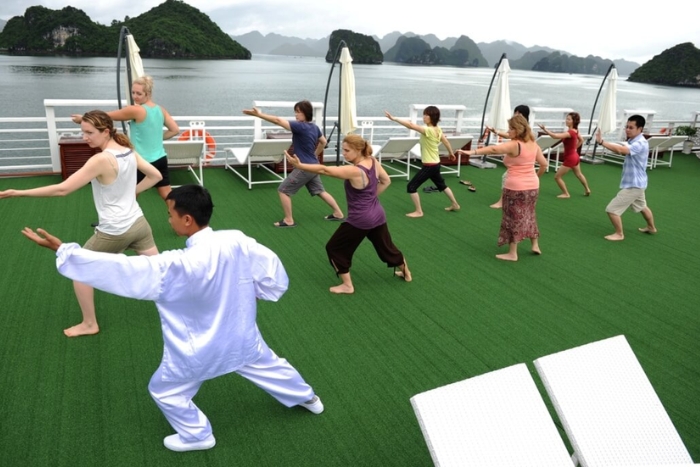
Ha Long Bay offers diverse experiences for every traveler. Start your day with sunrise Tai Chi on the sundeck, kayak through hidden caves, or enjoy a mesmerizing sunset from the boat. For a quieter escape, venture to the serene Bai Tu Long Bay or Lan Ha Bay, where stunning views await with fewer crowds.
9. Ninh Binh – The Terrestrial Ha Long Bay
Located south of Hanoi, Ninh Binh or "Terrestrial Ha Long Bay", is a natural wonder inscribed as a UNESCO World Heritage Site since 2014, a place must see in north vietnam. Its landscapes evoke scenes from fairy tales, with majestic limestone mountains, lush rice fields, mysterious caves, and karst formations. This special place has served as the backdrop for famous films such as "Indochine" and "Kong: Skull Island."
In your north vietnam travel itinerary, a boat ride along the Ngo Dong River through the three natural tunnels carved by the river is a must-do experience, immersing you in the heart of towering cliffs and enchanting scenery. The golden rice fields lining the river offer a dazzling display, especially during the rice harvest between May and June, and again in September and October.
Explore the Trang An Scenic Landscape Complex, a UNESCO World Heritage Site, where boatmen row with their feet through a landscape complex of striking beauty. A bike ride through the surrounding countryside reveals ancient pagodas and picturesque vistas.
Ninh Binh was once the capital of Vietnam, leaving behind a rich historical legacy. Hoa Lu, the ancient capital, and the Bai Dinh Buddhist Complex are testaments to this fascinating era.
These destinations in Northern Vietnam offer a unique blend of natural beauty, cultural heritage, and unforgettable experiences that invite every traveler to explore the region’s hidden gems.
III. Suggested itinerary for Northern Vietnam Tours
Take Northern Vietnam trip, you can refer to our north vietnam travel itinerary :
Day 1: Hanoi - Ba Bể Lake (L ; D)
Day 2: Ba Be Lake - Trekking & Cruise By Sampan (B ; L ; D)
Day 3: Ba Be – Khuổi Ky (B ; D)
Day 4: Khuoi Ky – Bản Giốc Waterfalls – Khuổi Khon (B ; D)
Day 5: Khuổi Khon – Mèo Vac – Đồng Văn (B ; D)
Day 6: Dong Van – Tha Village (Thôn Tha, Phương Độ, Hà Giang) (B ; D)
Day 7: Tha Village – Hanoi (B)
Or another excellent choice for an adventurous journey in Vietnam at here :
1. Best Time to Visit Northern Vietnam
Northern Vietnam offers diverse experiences year-round, but the
best time to visit north vietnam is from October to April, especially from October to December, when the weather is cool, dry, and perfect for sightseeing. April is also a great choice with mild temperatures and fewer tourists. Must-see spots include Ha Long Bay, Sapa, Ha Giang, and Hanoi. Avoid the rainy season from May to October, particularly during typhoon-prone months of August and September, which can disrupt travel plans. Always check local weather forecasts to ensure a smooth trip.
2. How to Get Around Northern Vietnam?
Local transport options like buses and trains are efficient and scenic, connecting major cities and tourist sites affordably. For a unique experience, take the overnight train from Hanoi to Lao Cai, then a bus or taxi to Sapa. Once there, renting a motorbike is the best way to explore remote villages and scenic routes. This offers flexibility and a closer connection to the stunning landscapes and local culture.
3. Packing Essentials for Northern Vietnam
Pack for varying climates: light clothes for warm days, layers for cooler evenings, especially in mountainous areas. Bring sturdy shoes for hiking, a hat and sunscreen for sun protection, and a swimsuit for water activities. Include essentials like a
universal adapter, a secure bag for valuables, personal hygiene items, basic medications, and a camera to capture memorable moments.
4. Cultural Etiquette in Northern Vietnam
Respect local customs: remove shoes before entering homes and consider bringing small gifts like fruit when visiting. Dress modestly at religious sites, covering shoulders and knees. Understanding these cultural norms enhances interactions with locals and enriches your travel experience.
Northern Vietnam is a captivating destination full of natural beauty and rich cultural heritage. To explore its hidden gems and make the most of your trip, contact
AUTOUR ASIA - best Vietnam Travel Agency, for personalized travel planning. Get ready for an unforgettable journey!
How many days should I spend in Hanoi?
The ideal length of stay in Hanoi depends on your personal preferences and travel style. For an immersive experience in the city’s unique atmosphere, a stay of four to six days is recommended. This allows enough time to explore key historical sites, delve into the rich culture, and savor the city's offerings. Of course, if you have more time, you can further explore the diverse neighborhoods and enjoy the wide range of activities Hanoi has to offer.
When to Visit Cao Bang?
The best time to visit Cao Bang in Northern Vietnam largely depends on what you wish to experience. Each season showcases a unique charm of this region, offering different highlights throughout the year. However, seasoned travelers recommend visiting in August and September, when the weather is ideal for outdoor activities. During this period, the climate is particularly pleasant, with cool temperatures and dry conditions, perfect for hiking and exploring. The lush landscapes and tranquil rivers make for an unforgettable experience. If you’re looking for optimal conditions to fully enjoy the natural beauty of the area, these months are the best choice for your trip.

